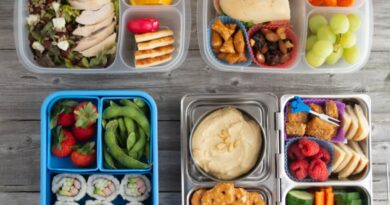Is there such a thing as a picky eater test so I can help my child?
If you’ve tried everything and your child still won’t eat, it may be that their picky eating is more than the common toddler food refusal phase.
Some children have difficulty eating because they’ve missed an important developmental window during weaning, others have a sensory processing issue which prevents them from trying new food.
For others it’s behavioural but did you know that for most children with picky eating, the behaviour was just a normal part of their development but how we responded as parents during this extremely frustrating phase has likely made this worse.
In this blog I’ll explain the differences between picky eating and problem feeding and you can also take my FREE picky eater test to find out if your child might need extra help.


What is picky eating?
Picky eating is a normal developmental phase of early childhood for the majority of children. All children go through this phase which starts at around the age of 18 months to 2 years. During this phase, they can refuse to eat both new foods and foods they have eaten before (1).
What causes picky eating?
In the toddler years, cognitive, emotional and social development mean that toddlers enter a ‘neophobic’ phase where they become suspicious of both new food and some familiar foods.
It causes a true fear response so encouraging a toddler to eat something they are truly afraid of can cause drama at mealtimes. Again, what you need to know is that this is totally normal and an expected part of early childhood.
Is this just a phase?
Yes it is, a developmental one. But often depending on how you parent around food during this tricky time can result in prolonged fussy eating and affect your child’s psychology around eating.
What I’d like you to do is take my picky eater test to see exactly how picky your child is with their food and you’ll get some initial advice on what to do to help them through this phase so that you don’t end up with a feeding problem later on.


Picky eater vs Problem feeders
Some children do have feeding problems and they will need extra help.
Problem feeders usually lack eating and drinking skills, they may have been tube fed or experienced repeated choking, gagging or coughing during meals.
They may have preferred textures of food, avoiding anything that’s too complicated to eat and may also weigh less than other children of their age (2).
Some children have a type of eating disorder called ARFID (Avoidant/Restrictive Food Intake Disorder).
This is what my picky eater test will help you identify.
Can a doctor test to see if my child is a problem feeder?
They can assess your child via a conversation with you. And if you can relate to any of the points I have described above about problem feeding, you should get them checked out.
The initial assessment would be carried out by your GP and if they are concerned that this is more than the expected picky eating of childhood, they will refer on to the relevant specialists.
Your GP will need to know how long the picky eating has been going on for and any eating behaviours you are worried about (3). They will also assess your child’s weight and growth.


What are the main differences between picky eating and problem feeding?
According to the research by Dr. Kay A. Toomey, there are 7 main differences (4) between a picky eater and a problem feeder.
1. Tolerance to new food
Picky eaters can tolerate the introduction to new foods (even if reluctantly) while problem feeders will break down (cry, scream and throw tantrums) when new food is introduced and completely refuse to eat it..
2. Number of foods eaten
Problem feeders have a very restricted range or variety of foods. They usually eat less than 20 foods whereas picky eaters typically have 30 or more foods in their food range.
3. Ability to eat foods from all texture categories and food groups
The food your child eats can be categorised in two groups: texture and nutrition.
The texture group includes:
-
Hard mechanical such as crackers, dried fruits, biscuits and crisps
-
Hard munchable such as raw carrots and dried apple rings
-
Liquid such as milk, juice or water
-
Mechanical such as crispy bacon (USA style), frozen berries, pine nuts or hard granola bars
-
Meltable hard solids such as cheese puffs, melty rings, Rice Krispies
-
Mixed texture such as baked beans, ramen, vegetable soup (not blended)
-
Powdered foods such as parmesan cheese
-
Puree which includes ketchup, yoghurt, apple puree
-
Soft cubes such as canned beans (without sauce), grated cheese, diced tinned peaches
-
Soft mechanical foods such as bread, pasta, chicken nuggets, eggs, pancakes, frozen potato shapes e.g smiley faces
The nutrition group includes:
-
proteins (meat, fish, eggs, beans, lentils, tofu and other veggie protein),
-
fruits and vegetables,
-
starchy carbohydrates (bread, pasta, rice, potatoes),
-
dairy foods (milk, yogurt, cheese and milky desserts like rice pudding or their fortified non-dairy alternatives), and
-
healthy fats and oils (olive oil, avocado, nut butters and ground nuts, and seeds).
A picky eater can normally eat at least one food from most nutrition or texture groups. A problem feeder will refuse entire categories of food textures or nutrition groups.
4. Ability to eat the same foods as the rest of the family
A picky eater might eat a different set of foods at a meal but will typically eat at the same time and same table as the rest of the family.
Problem feeders almost always eat a different set of foods than the rest of the family. Additionally, they will often eat at a different time and/or place than the rest of the family.
5. Duration of pickiness
If you occasionally have to deal with your child’s pickiness, it is likely that it might just be a fussy eating phase. A parent of a problem feeder will persistently report picky eating.
6. Loss of foods from food range
Their accepted food list gets smaller over time due to “burn out” from food jagging (eating just one food over and over) but after a break of a few weeks, picky eaters will accept these foods again, problem feeders wont.
7. Ability to learn to eat new foods
Picky eaters can learn to eat new foods by using a specific technique that SOS accredited feeding therapists such as myself help families design (2). Problem feeders can learn to eat new foods too but the intervention takes a lot longer with more intense feeding therapy.


What’s a picky eating disorder?
Ok, so we have talked about picky eating and problem feeding but you might be wondering about the term ‘picky eating disorder’?
You have probably been told before by well meaning individuals that your child will outgrow picky eating. However you should know that picky eating disorders like Avoidant/Restrictive Food Intake Disorder (ARFID) exist.
Avoidant/Restrictive Food Intake Disorder (ARFID), is considered a form of an eating disorder but without the involvement of eating to change body weight or shape. In children there is often a sensory component, where the disgust response is triggered even at the thought of eating. Children with ARFID very often can’t be in the same room as other people eating, so school dinner halls, birthday parties and even the kitchen at home are avoided. (5)
How can I help my child with ARFID?
ARFID needs to be managed by a multidisciplinary specialist team who will create a programme to meet the child’s individual needs.
Teams consist of a specialist dietitian, a psychologist, an occupational therapist and sometimes a Speech & Language Therapist if there is a need for the child to learn how to eat. Some teams also have a paediatric doctor, particularly if there are medical conditions involved too.
Unfortunately, children do not outgrow ARFID, they just become adults with ARFID (and there are plenty of them) but the right treatment can help restore healthy eating habits and overall health (5).
How to help your child with their picky eating
There are a number of positive food parenting strategies that we all should use to help our children with the psychology of eating. Ultimately we want them to grow up to have really good eating habits. This is how you do it
Please note that these tips are not effective with children with ARFID.
Develop positive food parenting strategies
There are four different food parenting styles that have been identified in the psychology of feeding:
They are controlling, indulgent, uninvolved and diplomatic (6).
Most of us have a combination of all 4 styles but one will dominate. If you have a picky eater it’s nearly always down to the controlling parenting style.


Controlling parents tend to:
-
ask their children to eat
-
remind them to eat something on their plate that we don’t think they’ve eaten enough of (or any of) yet.
-
use a reward for eating something
-
withhold dessert till they’ve eaten what you’ve asked
-
use distraction techniques like toys at the table or the TV or ipad to get them to eat
-
feed them when they are older than 10-12 months and so capable of self feeding.
Please don’t take this the wrong way, we adopt these strategies because we are deeply concerned about their lack of eating and we’ll do everything we think we can in order to help.
However there is a better way…..
The diplomatic food parenting style
The diplomatic food parenting style is optimal in supporting healthy child development.
The diplomatic parent will plan a suitable age appropriate routine of meals and snacks so that their children learn to regulate their appetite.
There will be boundaries or limits including table manners and teaching your child to ask before taking food.


Diplomatic parents invite their children to sit at the table and eat with them at mealtimes. There are no phones (including mum & dad), screen or toys at the table and children are present even when they choose to not eat.
Mealtimes are pleasant family time, arguments are diffused.
Children can have a choice, your job is to decide on the menu (children’s nutritional knowledge is terrible) but they could choose between peas or sweetcorn or spaghetti or penne. This shows your child that their opinion is important.
The diplomatic parent observes what their child eats and adapts the menu to make up for nutrients that may have been omitted if they didn’t eat well earlier, but observing is not policing! It’s for your knowledge only.
And diplomatic parents have a trusting relationship with their child and their eating, which means they embrace the Division of Responsibility in feeding.
Division of responsibility in feeding
The Division of Responsibility In Feeding by Ellyn Satter (7), defines the role of the parent and the role of the child in the feeding relationship, and can be implemented right from the very start of weaning (and actually beforehand while feeding too!).
The parents’ role involves deciding on the What, Where and When. So what’s on the menu, where the eating will be taking place and what the feeding routine will be (the when). Then your job is done.
It is your child’s role to decide if they will eat. If they will, they will also decide how much and when to stop. They are actually really good at this, they’re born with the ability to self regulate but this goes away the more we interfere with our children’s role!!
The division of responsibility involves trust. Your child will learn at their own pace and it’s important to let them do so. If you ask your child to eat, this feels like pressure and you’ll be right back at square one with a picky eater who does not improve. Instead, sit down with them and enjoy your meal.
How to get more help?
Getting help and support for you as a parent implementing these changes is without a doubt one of the best things you can do for your child and their picky eating.
There are a couple of ways I can support you:
The Happy Healthy Eaters Club – this is a DIY approach where I teach you the skills and strategies for you to implement with your child at home.
1:1 private consultations and support – working with you and your family to get personalised strategies and 10 follow up sessions with me to help you when the going gets tough (because it will) by application only via sarah@childrensnutrition.co.uk
If you believe your child is a problem feeder or has a picky eating disorder, it is important to seek help from your GP to get referred on for the right support.
If you would like a PDF of this blog delivered directly to your inbox, pop your details below.


Sarah Almond Bushell MPhil, BSc (Hons) RD MBDA – Registered Dietitian & Children’s Nutritionist
The post Is there such a thing as a picky eater test so I can help my child? appeared first on The Children's Nutritionist.




